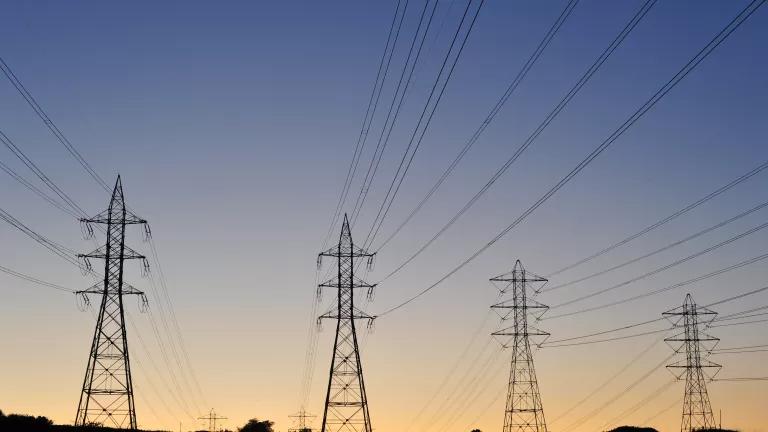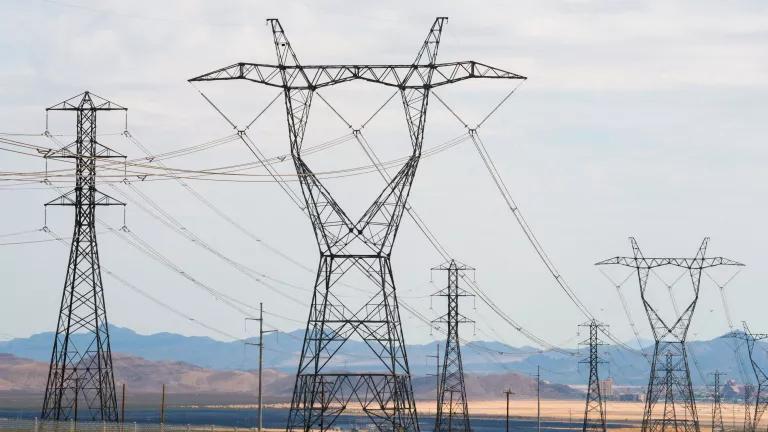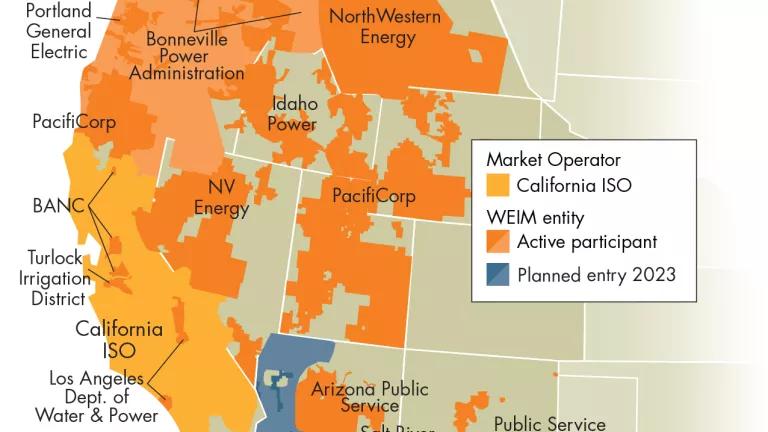The Race to Organize Energy Markets in the Western U.S. Is On
A western regional transmission organization would spur the development of clean electricity sources and lower costs for consumers.

Chris Hunkeler via Flickr, CC-BY-SA 4.0
With proposals to expand power market services to western states advancing on two fronts, utilities from Oregon to Arizona are weighing the prospect of one day becoming part of an organized electricity market.
It’s a development NRDC strongly supports and encourages.
Utilities from California to the Great Plains and parts of Western Canada are part of the Western Interconnection, a synchronous grid that allows them to tap into power from distant sources. The ability to import power from regions that were unaffected by a late September heat wave that stretched from Los Angeles to Denver helped California keep the lights on.
But those benefits don’t compare to what a western Regional Transmission Organization (RTO) that allows utilities across multiple states to share energy resources through an organized market could offer. RTOs are independent organizations that run wholesale electricity markets, ensuring economic competitiveness and reliability. Currently, California is the only grid in the western U.S. managed by an RTO. Ten western states—Arizona, Colorado, Idaho, Montana, Nevada, New Mexico, Oregon, Utah, Washington, and Wyoming—are not part of an RTO and are missing out on the benefits organized markets offer. By one estimate, linking Western utilities into one RTO would create hundreds of thousands of jobs, spur economic growth, and save customers $2 billion a year on their electric bills, according to a July report from Advanced Energy Economy.
“The Western region, and every individual Western state, could expect economic benefits from a West-wide RTO,” the report said. “The sooner RTO development occurs, the sooner the region can be put on the path to realizing these long-run benefits.”
With the prospect of a western RTO on the horizon, the California Independent System Operator (CAISO), the RTO for California and parts of Nevada, and the Southwest Power Pool (SPP), the RTO for utilities in several Midwestern and Central U.S. states, are each proposing to expand services they currently offer to western states that some see as an intermittent step toward an RTO in the west.
CAISO and SPP currently provide load balancing services that have enhanced efficiency and lowered costs to non-RTO states and are now proposing voluntary day-ahead market services that would build on their current services. CAISO’s final proposal for their Extended Day Ahead Market (EDAM), published on December 7, is designed to increase regional coordination, encourage the development of renewable energy resources, and lower costs for consumers and could be implemented as early as 2024. SPP is also proposing a day-ahead market, Markets+, which could be implemented as early as 2026.
While a move to day-ahead markets in the west is a good first step toward optimizing western grid integration, NRDC supports continued progress with the formation of a full western RTO. This, along with economic benefits, would ease integration of renewables onto the grid, improve transmission planning across the region, and enhance reliability by expanding power resource options for all participants. The western U.S. is home to some of the best wind resources in the country, as well as high-quality solar. If regional coordination were optimized to allow rural renewable resources to serve load in population centers across the west—as would be the case under an RTO—renewable projects are more likely to be developed.
Meanwhile, the recently passed Inflation Reduction Act, which extends existing tax credits for renewable and energy storage projects while creating new clean energy credits, is expected to usher in a surge of spending on wind, solar and storage projects, making interregional cooperation among utilities more critical than ever. A western RTO would spur the development of clean electricity sources in the West, lower costs for consumers, and speed the transition to a carbon-free electricity system.




